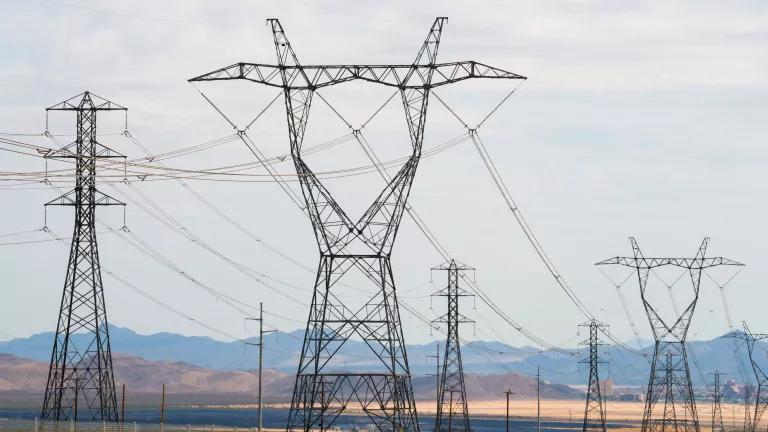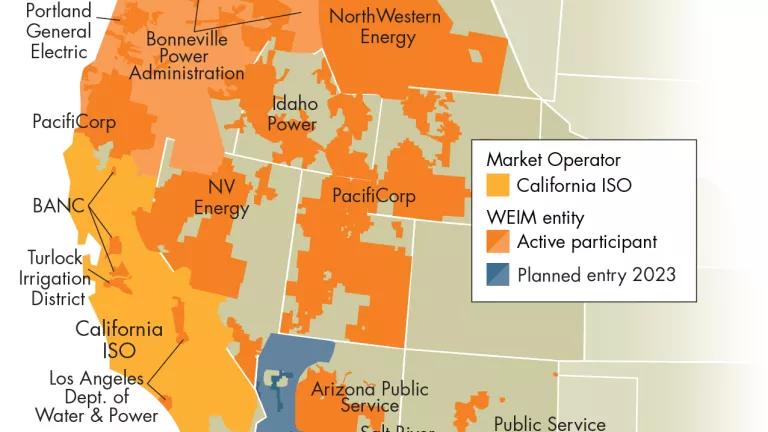A New Pathway to a Western Grid
Pathways Initiative approves two-step approach to create independent governance for a west-wide electricity market.

Pixabay via Pexels
As we head into a hot summer, reliability of the grid is top of mind. With the Western U.S. experiencing increasing impacts from climate change - like heat waves, wildfires, and drought – and demand for electricity rising, the existing, fragmented power grid is increasingly found to be ill-equipped to efficiently, cost-effectively, and reliably meet the power needs of the region. Absent changes, the region faces the prospect of more frequent power curtailments and blackouts.
Integrating the western grid by linking utilities in a broad electricity market will not only enhance reliability, but also provide the region with significant annual cost savings, increase opportunities to integrate more renewable energy resources, and allow more efficient use of the renewables currently available.
With a western day-ahead electricity market recently approved by FERC and poised to bring some of these benefits to the region, an additional effort is underway. This effort, called the West-Wide Governance Pathways Initiative, will both encourage broad participation in the western day-ahead electricity market to capture the value of the resource and geographic diversity of the region and create a path to stand up a new governance structure with full independence that could offer more services to the West that go beyond energy markets. And this week, the Pathways Initiative is taking a major step forward with a vote of approval for its phase one straw proposal.
How did we get here?
Let’s backtrack. Since 2014, the California Independent System Operator (CAISO) has run a west-wide real-time electricity market, the Western Energy Imbalance Market (WEIM). After a years-long stakeholder process, CAISO finalized its new voluntary Extended Day-Ahead Market (EDAM) that will offer western utilities, clean energy producers, and other entities services to manage their energy needs more efficiently in the day-ahead time frame. EDAM was approved by the Federal Energy Regulatory Commission in December 2023 and is scheduled to go live in early 2026. Several utilities across the West have already announced their commitment to join EDAM.
The WEIM and new EDAM are governed under joint authority between the CAISO Board of Governors – appointed by the California governor – and the WEIM Governing Body – chosen through engagement from a broad spectrum of western stakeholders. However, some potential EDAM participants in non-California states have expressed hesitation about joining a market with such heavy California influence.
With this roadblock to broad participation in the EDAM identified, a group of state public utility commissioners and other officials from across the western region - including Washington, Oregon, Arizona, New Mexico, and California - announced in July 2023 their commitment to realize a West-wide market, inclusive of California, that could be governed by a more expansive representation from across the West.
In under a year, the Pathways Initiative went from a letter articulating a vision to a full proposed framework of market governance evolution that includes design elements and a summarized approach to implement proposed changes that is widely supported across the West and by diverse stakeholders. It is a potential path forward for a western grid that takes advantage of existing markets and expansion efforts while addressing concerns and barriers to greater involvement.
What is in the phase one straw proposal?
The proposal includes a two-step process. The first step will transfer primary authority over the EDAM and WEIM from CAISO to the WEIM Governing Body, providing the western market participants more autonomy by enabling the WEIM Governing Body to engage directly with FERC to oversee the western market functions. The second step gets to the core of the goal outlined in the original July letter and creates a new governance structure: creating a Regional Organization with a fully independent board with sole authority over the western market functions. The two-step process is open, transparent, inclusive, prioritizes geographic and industry diversity, and balances the need to move quickly with the time pressure on stakeholders. The proposal reflects the initiative’s commitment to develop a process and outcome that are truly western stakeholder driven.
In our comments on the straw proposal, submitted May 8, 2024 alongside partners, we wrote, “Step 1 also proposes to enhance public interest safeguards for market participants and consumers through modification of the WEIM Charter. [We] support the additional language proposed by regulators and public advocate representatives for the Charter that reads: ‘Respect state authority to set procurement, environmental, reliability, and other public interest policies.’”
Importantly, there is also a longer-term step three, not specifically outlined in this straw proposal, that keeps the door open for the eventual development of more regional market services, including a full Regional Transmission Organization (RTO) in the future. Integrating the western grid under a day-ahead market would provide considerable benefits, but a West-wide RTO would go further. It would optimize transmission planning and create hundreds of thousands of jobs, spur economic growth, and save customers $2 billion a year on their electric bills.
The full integration of the western grid would create such substantial benefits to customers across 11 states in the western region, including Arizona, California, Colorado, Idaho, Montana, Nevada, New Mexico, Oregon, Utah, Washington, and Wyoming. Each state in the West has varying energy resources mixes, population densities, electricity demand levels, and many more unique qualities. Harnessing that geographic and resource diversity under an integrated market is key to meeting our decarbonization goals, load growth needs, and reliability expectations.
Next Steps
Today’s unanimous vote of the Pathways Initiative’s Launch Committee, which is made up of geographically and industry diverse stakeholders, is a meaningful and practical step forward toward independent governance for a West-wide market and shows that the initiative has substantial buy-in to progress into the next phase and realize the reality of regionalization.
The Launch Committee is keen to move swiftly and effectively to continue the progress and momentum of this initiative with its Phase Two plan. Over the next several months, they will work with the western states, stakeholders throughout the West, and CAISO to develop and implement the necessary changes to make the proposal possible and seat the new Regional Organization board by January 2025. NRDC supports this Initiative as a clear path toward western grid integration.



